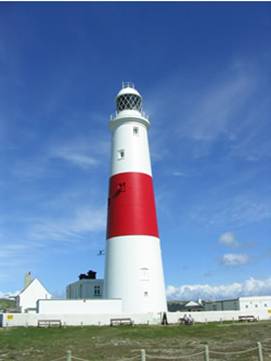Why, if left only to market forces, will public goods cease to be produced and consumed

| Definition: To be classified as a pure Public Good the good must have certain characteristics: 1. Non-Rivalry 2. Non-excludability Which together inevitably lead to the Free-Rider problem. |
Pure public goods are ones that when consumed by one person can also and at the same time be consumed by everyone else and where it is impossible to exclude others from its consumption.
An Examples of a pure public good is:
national defence;
However, there are a number of goods and services that have have these characteristics to a lesser extent and therefore are also problematic when left to market forces to provide:
- the police service;
- street lighting;
- lighthouses;
- flood-control dams;
- pavements;
- public drainage.
It is likely that the market, left to itself, will seriously under-produce such goods, or possibly not produce them at all. This is because the market will only provide goods for which a profit can be made, and pure public goods possess two important properties that together make their production on the basis of private profitability extremely difficult. These features are:
- non-rivalry (or non-diminishability);
- non-excludabilty.
Firstly, consider the characteristic of non-rivalry: this means that one person's use of the public good does not deprive any other person of such use or does not diminish the amount available to others; for example, if one person enjoys the benefits of being protected by the police-force, a flood control dam or the national defence system, it does not prevent everyone else doing the same; similarly, if one person benefits from walking along a street at night-time which is paved, free of pot-holes, and well-lit, the benefits and the availability to others would not be diminished (In a strict sense this is not true so these are examples of Quasi-Public Goods).
Secondly, consider the characteristic of non-excludability: this means that when the public good is provided to one person, it is not possible to prevent others from enjoying its consumption. For example, if a police force, a flood-control dam or a national defence system is successful in offering protection to some citizens of a country, once it has been produced it is impossible to exclude anyone within the country from consuming and benefiting from them. Similarly, for a paved and well-lit public street, nobody can be prevented from enjoying these benefits (Again this is not strictly true but in practice this remains the case).
The concept of a 'public good' can perhaps best be understood by comparing it with its opposite, a private good.
A private good possesses the two features, excludability and rivalry, and when consumed by one person, it is not available to others; thus, a person buying a new washing machine can exercise private property rights over it and exclude others from enjoying its cleaning abilities, whilst, at the same time, diminishing the total stock of washing machines available for sale to others.
Think of an ice-cream if you eat it there is less ice-cream in the world for others to eat (ie there is rivalry)
Thus, in the case of public goods,the market fails because the private sector would be unwilling to supply them - their
non-excludabilty makes them non-marketable, because non-payers cannot
be prevented from enjoying the benefits of consumption, and therefore
prices cannot be attributed to particular consumers.
The non-rivalry also takes away the
idea of consumers competing for units of the good to consume and
ensuring that competition sets a market price through competition.
This involves the free-rider problem, which arises when it is impossible to provide a good or service to some without it automatically and freely being available to others who do not contribute to its cost.
For example, imagine a situation in which you shared an island with five other inhabitants; if you paid privately for an army to defend the island against violent invaders, your five co-inhabitants could 'free-ride' off you by enjoying the benefits of the defence, without having to pay anything towards it; there would probably come a point when you would withdraw your payments and, like the others, leave it to someone else to foot the bill; eventually, the army would not be provided at all.
Syllabus: Explain, with reference to the free rider problem, how the lack of public goods indicates market failure.
Free riders
Free riders are those who enjoy the benefits of a public good without having to pay, because it is impossible to exclude them.
Syllabus: Discuss the implications of the direct provision of public goods by government.
Hence, in a free market, a whole range of pure public goods may not be provided, and the only answer is for the state to provide them, financed out of general taxation. Moreover, the non-rivalry aspect of public goods means that the cost of supplying one more user i.e. the marginal cost, is zero; for example, once paving stones have been laid, it makes no difference how many people walk along them as there is no additional cost involved. As the condition for the achievement of allocative efficiency is that price should be set equal to marginal cost, it would therefore follow that to achieve an optimum level of output and consumption of public goods the state should provide them at zero prices.
Attempts to privatise quasi-public goods can be seen with toll-roads where non-excludability is overcome by building barriers preventing non-paying drivers from using the road: eg Dutra out of Sao Paulo
To check your understanding complete the table below:| Main features | Public goods | Merit goods | Private goods |
|---|---|---|---|
| Diminishability (non-rivalry) | Non-diminishable (non-rivalry) | ||
| Excludability | Excludable | ||
| Benefits | Individual and communal (strong positive externalities) | ||
| Provider | Usually private enterprise | ||
| Financed by | Usually taxation | ||
| Examples |
Follow this link for answers
